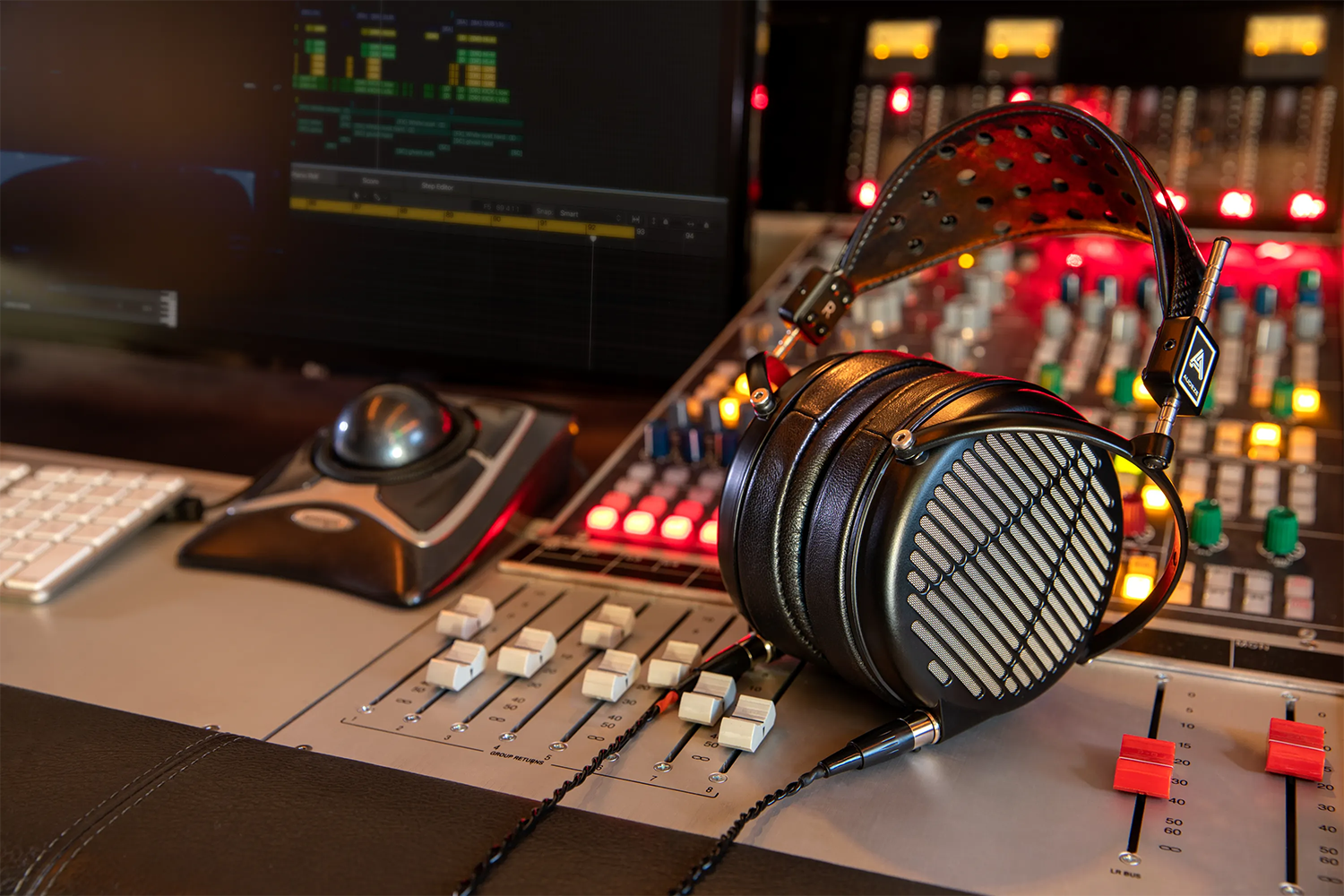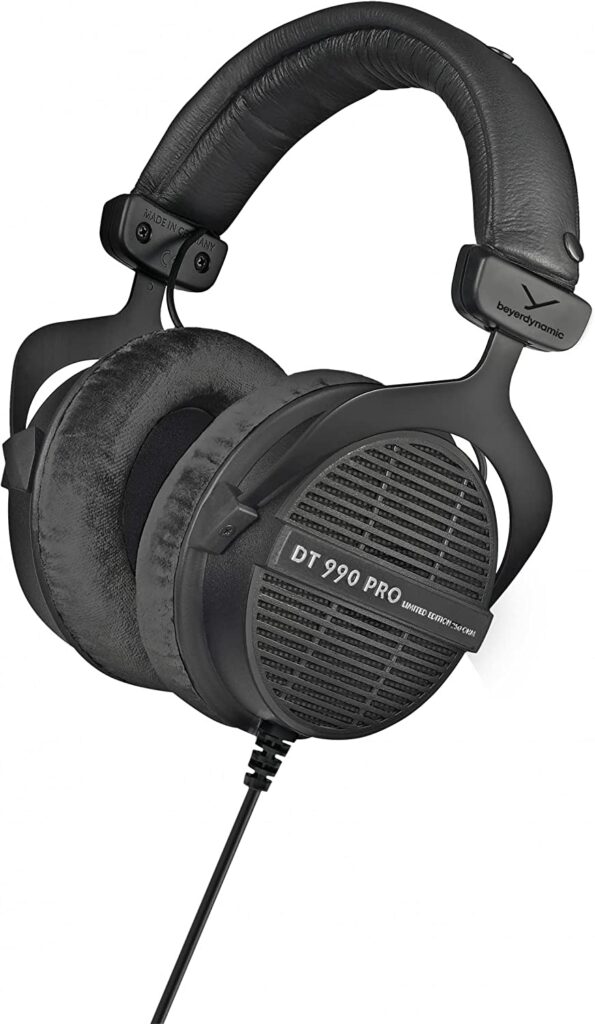Mixing with headphones requires a specific approach and proper techniques. In order to achieve accurate and balanced sound, it is important to understand the limitations and advantages of headphones.
Headphones are a popular alternative to traditional studio monitors for recording and mixing music. They offer a more intimate listening experience and can help isolate individual elements in a mix. However, they also have some limitations, such as potential ear fatigue and a lack of physical space and dimension.
To overcome these limitations, experienced engineers often rely on a combination of techniques, including reference tracks, cross-referencing with other listening systems, and using specialized EQ and monitoring plugins. It is also important to choose high-quality headphones that accurately represent the sound and dynamics of the mix. We will discuss the dos and don’ts of mixing with headphones, as well as some essential tips and tricks to help you achieve professional-level results.
Why Mixing With Headphones Is Challenging
Mixing with headphones presents unique challenges due to their closed-back nature that limits the perception of the stereo image and frequency response. Additionally, headphones can cause listener fatigue and lack the physicality of monitors, making it difficult to achieve a balanced mix.
Mixing with headphones has become increasingly common for many producers and engineers, especially those working in home studios or remote locations. Headphones provide a convenient and affordable way to monitor and mix audio, but they also have a unique set of challenges. In this article, we’ll explore some of the reasons why mixing with headphones can be challenging and offer some tips to overcome these challenges.
Lack Of Physical Interaction With Sound
One of the biggest challenges of mixing with headphones is the lack of physical interaction with sound. Unlike speakers, which interact with the room and create a three-dimensional soundstage, headphones deliver sound directly to the ears. This can create a sense of “in your head” sound that can lead to inaccurate monitoring and mixing decisions. It’s important to compensate for this by checking your mix on multiple systems, like car speakers or studio monitors.
Impedance And Frequency Response
Another challenge of mixing with headphones is the impedance and frequency response of different models. Impedance can affect the level of detail and accuracy in your monitoring, while frequency response can alter the perceived balance of different elements in your mix. Choose a pair of headphones that are well-suited for your specific needs, and take the time to understand their technical specifications in order to make informed mixing decisions.
Soundstage Limitations
Finally, another challenge of mixing with headphones is their soundstage limitations. While some headphones have a relatively wide soundstage, others can feel quite narrow and confined. This can make it difficult to hear the true spatial relationships between different elements in your mix. To compensate for this, try using a stereo imaging plugin to enhance the perceived width and depth of your mix. In conclusion, mixing with headphones can be a valuable tool for many producers and engineers, but it requires careful consideration and attention to detail. By recognizing and compensating for the unique challenges of headphone monitoring, you can achieve accurate and effective mixes that will translate to a variety of listening environments.

Credit: www.soundonsound.com
Advantages Of Mixing With Headphones
Mixing with headphones can offer some significant advantages such as greater accuracy, portability, and a more detailed sonic representation. With the right pair of headphones and a disciplined approach, you can produce high-quality mixes with ease and confidence.
When it comes to mixing audio, headphones have become an increasingly popular alternative to traditional studio monitors. As technology advances, headphones are now able to provide high-quality sound reproduction that is comparable to that of studio monitors. Here are some advantages of mixing with headphones:
Noise Isolation
Headphones are fantastic for mixing because they provide excellent noise isolation. With headphones on, you can completely block out external noise, which is impossible to achieve with studio monitors. This means you can hear every detail in your mix, which is crucial when making decisions about the dynamics and EQ of your audio. Additionally, noise isolation can help keep your mixing environment consistent, regardless of where you are or what time of day it is.
Consistency
Whether you’re in a professional studio or working from home, using headphones ensures consistency in your mixes. Unlike studio monitors, which can sound different depending on the location and position in the room, headphones provide the same sound no matter where you are. This consistency makes it easier to make accurate mixing decisions, as the sound of the mix remains the same.
Convenience
Mixing with headphones is incredibly convenient. You can work from practically anywhere without worrying about the room’s acoustics, and you don’t need to invest in expensive studio equipment. Headphones also make it easy to hear low-frequency sounds clearly, which can be difficult to achieve with monitors in small rooms or untreated environments. Besides, they are portable and can be taken wherever you want. In summary, mixing with headphones offers advantages such as excellent noise isolation, consistency, and unmatched convenience. With the right pair of headphones, you can produce high-quality audio that rivals professional studio monitors.
Tips For Successful Headphone Mixing
Achieving an accurate mix with headphones can be challenging, but it’s essential to ensure your music sounds great across various playback systems. To succeed in headphone mixing, use high-quality headphones, consider adding crossfeed, adjust levels carefully, take breaks to avoid ear fatigue, use reference tracks, and check your mix across other systems.
As a music producer or audio engineer, headphone mixing has become an integral part of the job. With the advancements in technology, headphones have become much more accessible and affordable. However, not all headphones are created equal, and mixing on low-quality headphones can lead to poor translation in different playback systems. Here are some tips for successful headphone mixing.
Use High-quality Headphones
The first tip for successful headphone mixing is to use high-quality headphones. Investing in a good pair of headphones is crucial for accurate monitoring and sound quality. Closed-back headphones are recommended for tracking and overdubbing, whereas open-back headphones are ideal for mixing and mastering.
Calibrate For Flat Frequency Response
The frequency response of headphones plays a significant role in headphone mixing. Each pair of headphones has its own frequency response curve, which affects how the audio sounds. It’s essential to calibrate headphones accurately to achieve a flat frequency response. Many software applications and plugins can help calibrate headphones, including Sonarworks, Waves, and IK Multimedia.
Take Breaks
Finally, taking breaks is crucial while headphone mixing. Listening to music on headphones for extended periods can cause ear fatigue, leading to inaccurate monitoring and mix decisions. Taking regular breaks is a way to give your ears a rest and come back to mixing with fresh ears. It’s advisable to take a 10 to 15-minute break for every hour of headphone mixing. In conclusion, headphone mixing is a useful tool, but it’s essential to use high-quality headphones, calibrate for flat frequency response, and take breaks to avoid ear fatigue. By following these tips, you can achieve a better mix and sound quality, helping your music translate well in different playback systems.

Credit: vintageking.com
The Future Of Headphone Mixing
The future of music production is here, and it’s all about headphones. Headphone mixing has been around for decades, but recent advancements in technology have made it a viable option for producers and engineers around the world. In this article, we’ll explore the future of headphone mixing and the latest advancements in headphone technology that are making it possible.
Advancements In Headphone Technology
Headphones have come a long way since the first earbuds were invented in the early 1980s. Today, there are headphones for every type of listener, from casual listeners to audiophiles and professional sound engineers. The latest advancements in headphone technology have made it possible to mix and master audio tracks using headphones with near-studio quality results.
New features like noise-cancelling technology, Bluetooth connectivity, and voice assistants like Siri and Amazon’s Alexa have made headphones more versatile than ever before. Take active noise-cancelling, for example – this technology blocks out external noise so you can focus on your music production. Wireless headphones have become popular over the years, which has enabled producers to work remotely while still maintaining high-quality music production.
Virtual Reality Audio
The future of headphone mixing is not only about sound quality and newer features, it’s all about giving a mesmerizing experience to the listeners using virtual reality audio technology. While the music industry is already producing 3D sounds for a few years, it’s the era of binaural beats and 3D sounds that enrich a listener’s experience.
Virtual Reality audio uses 3D audio technology to create a three-dimensional sound field that mimics real-life soundscapes. When using headphones, this technology creates an immersive audio experience that makes you feel like you’re in the middle of a sound field. Many music producers are already using virtual reality audio technology in their productions, and it’s expected to become even more popular as technology continues to advance.
Conclusion
The future of music production lies in headphone mixing, and with the latest advancements in headphone technology and Virtual Reality audio, producers and engineers can create high-quality audio tracks that rival studio recordings. Whether you’re a professional sound engineer or an aspiring music producer, headphone mixing is a tool that you can use to take your creativity to the next level.

Credit: www.acousticfields.com
Frequently Asked Questions For Mixing With Headphones
Is It Okay To Mix With Headphones?
Yes, it is okay to mix with headphones. However, it is crucial to keep in mind that the mix may sound different when played through different speaker systems. It is recommended to test the mix on several different speakers and headphones to ensure it sounds good on all devices.
Is It Better To Mix On Monitors Or Headphones?
It depends on personal preference and the type of music being mixed. Headphones are great for hearing individual elements in a mix, while monitors provide a more accurate representation of how the music will sound on various playback systems. It’s recommended to use a combination of both to achieve the best results.
Why Does Mix Sound Better In Headphones?
Mixes generally sound better in headphones because the sound is directed right into your ears and can be heard with a higher level of detail, accuracy and clarity. Headphones block outside noise which makes it easier to discern subtle nuances, panning and EQ.
It provides a close-up and concentrated listening experience.
Are Flat Headphones Better For Mixing?
Yes, flat headphones are better for mixing as they produce a neutral and accurate sound that helps in identifying and correcting flaws in the mix. Flat headphones do not artificially enhance any frequency range and provide an uncolored soundstage, making them ideal for mixing and mastering audio.
Conclusion
Using headphones to mix audio tracks comes with a host of advantages. With careful consideration of the limitations of headphones, digital audio workstations with plugin simulation, and attentive listening, you can achieve high-quality and polished audio mixes. Don’t forget to take breaks and ensure your headphones are calibrated correctly.
Happy mixing!